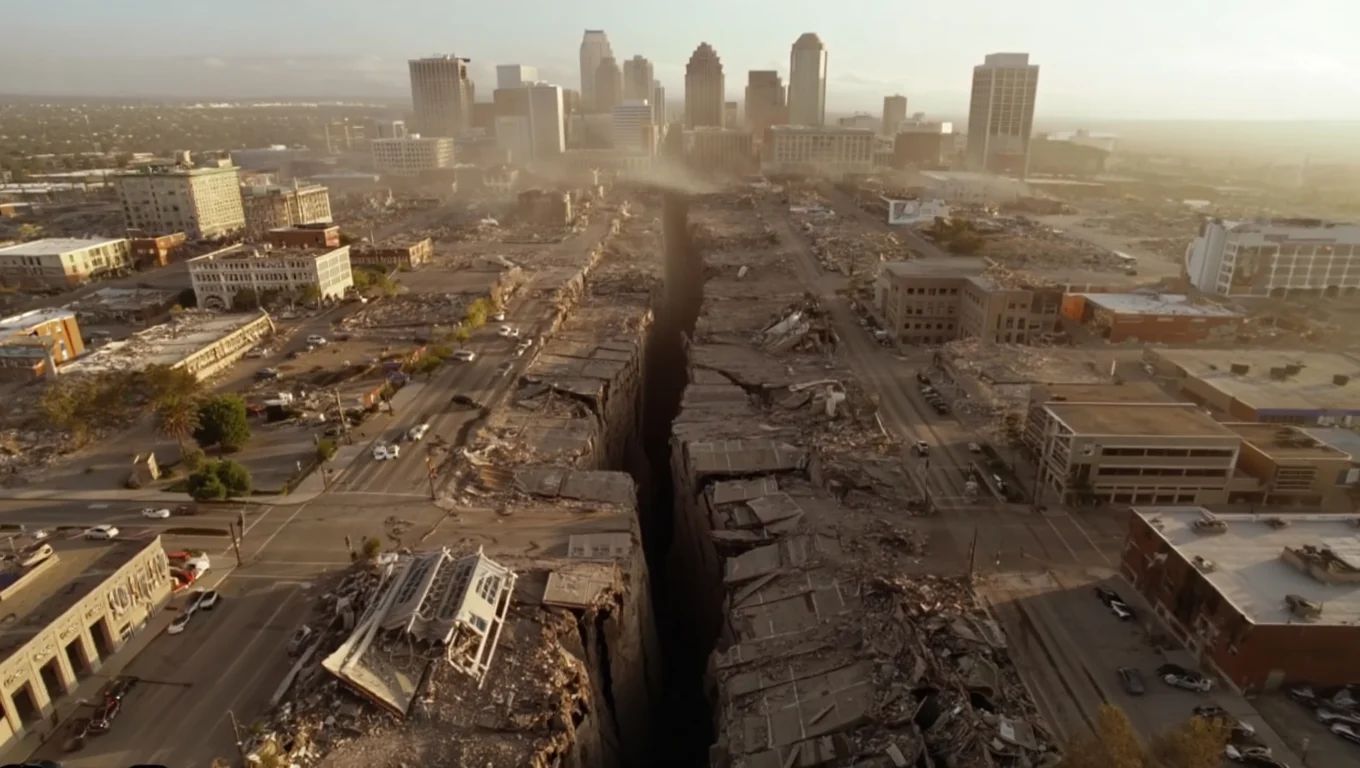Follow us on Google News (click on ☆)
Faults are fractures in the Earth's crust where tension builds up until it is suddenly released, causing earthquakes. The Sagaing fault in Myanmar, similar to the San Andreas fault, surprised scientists with the extent of its rupture last March. This event provided new insights into the unpredictable behavior of faults.

Artistic illustration of a fault splitting a city in two.
The San Andreas fault, stretching 750 miles (1,200 kilometers), is known for causing the 1906 earthquake that killed over 3,000 people. Scientists believe a new rupture is inevitable, with increased risk for urban areas like Los Angeles. Current models may underestimate the potential scale of this future event.
The study of the Myanmar earthquake revealed that the rupture extended over 310 miles (500 kilometers), far beyond expectations. This finding challenges the seismic gap hypothesis, which suggests faults primarily rupture in areas where tension has built up over time. Researchers used satellite imagery to measure ground displacements after the earthquake.
Satellite imaging techniques offer a new perspective for studying earthquakes. They can detect ground movements that traditional methods miss. These advances could improve seismic forecasts and help better prepare populations for future earthquakes.

California is densely populated.
Faults like San Andreas and Sagaing don't always follow past patterns. This study highlights the importance of continuing to explore the complex mechanisms of earthquakes. Technological progress is paving the way for a better understanding of these devastating natural phenomena.
How do seismic faults accumulate energy?
Seismic faults are zones where tectonic plates rub against each other and sometimes lock. Over time, tension builds up along these faults.
When the tension exceeds the strength of the rocks, the fault ruptures suddenly. This rupture releases the accumulated energy in the form of seismic waves, causing an earthquake.
The amount of energy released depends on the size of the ruptured area and the displacement of the plates. The larger the rupture and displacement, the more powerful the earthquake.
Scientists study these mechanisms to better assess seismic risks in populated areas.
What is the seismic gap hypothesis?
The seismic gap hypothesis suggests that faults tend to rupture in areas where tension has built up over time. These areas, called gaps, are considered more likely to trigger earthquakes.
This hypothesis has guided seismic forecasts for decades. It is based on the idea that faults regularly release accumulated energy to prevent excessive tension.
However, the Myanmar earthquake showed that faults can rupture far beyond identified gaps. This calls into question the reliability of this hypothesis for predicting future earthquakes.
Current research aims to integrate these new findings to improve forecasting models.